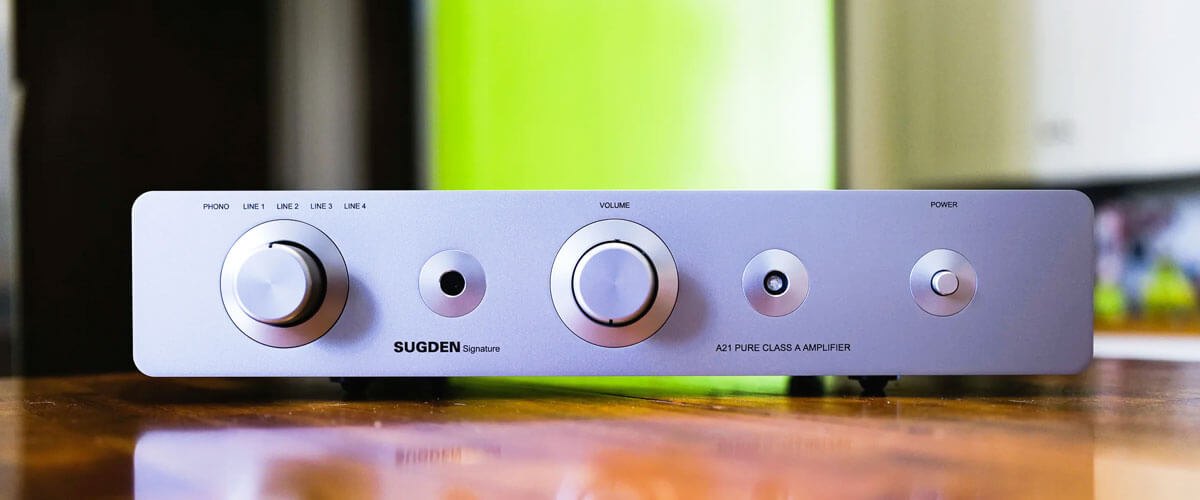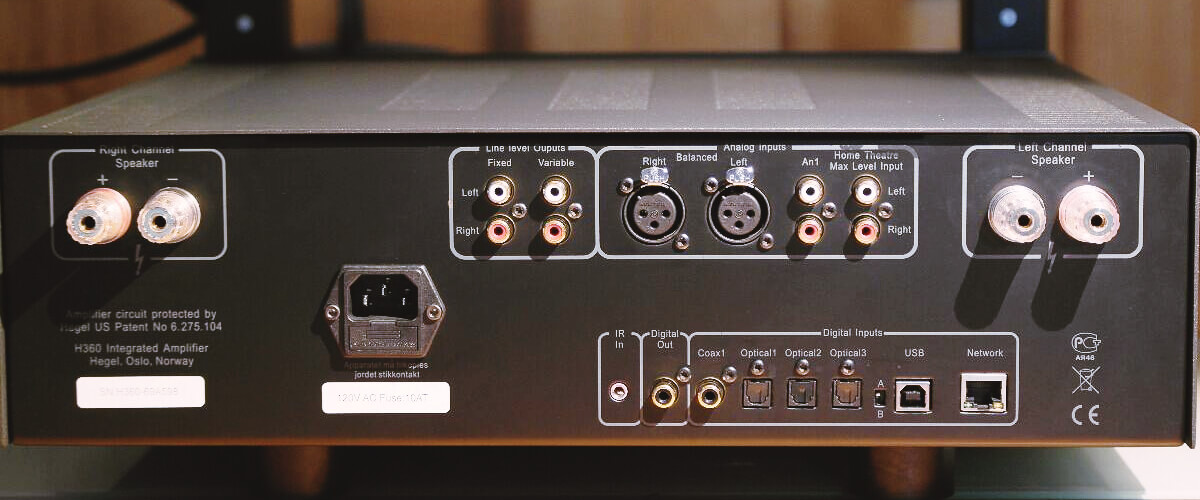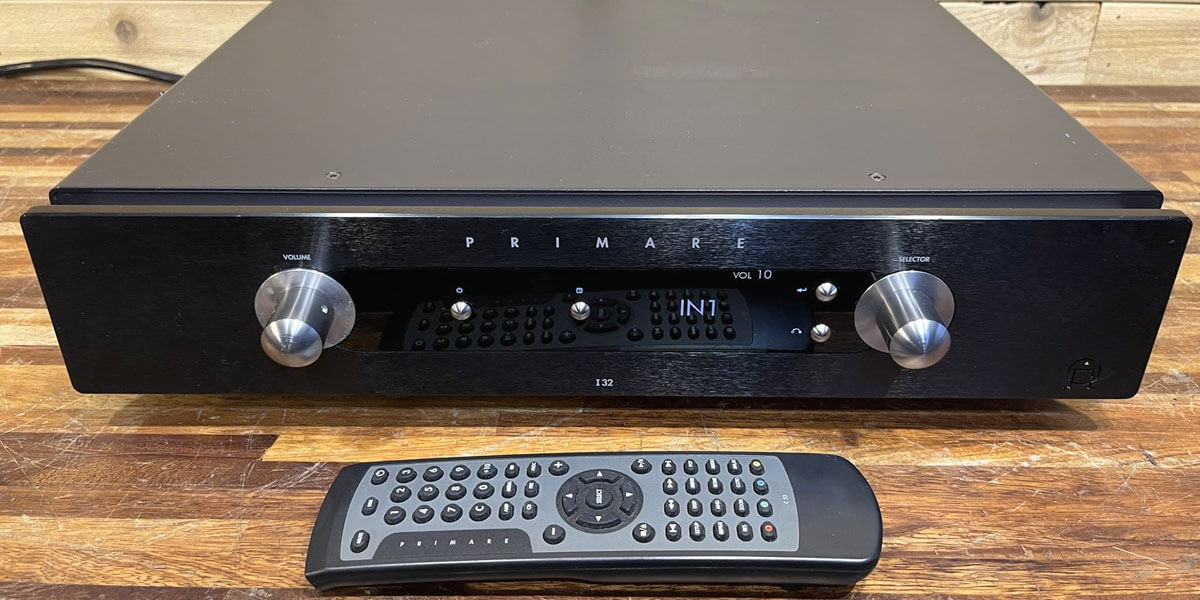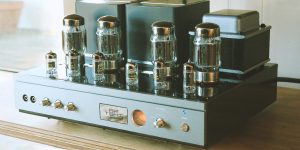Are you in the process of assembling your audio system and are at a crossroads, whether to build it from individual expensive components or to use an integrated amplifier? Then you are definitely in the right place. In this article, I’ll help you understand what an integrated amplifier is, what it does, its benefits, and whether it’s the right choice for you. Whatever you decide after reading this article, it’s good for any music lover to know about this kind of equipment. Well, without delay, let’s get started!
What is an integrated amplifier?
So, what is an integrated amp? To answer this question, let’s understand what components are part of a complete audio system and how the signal passes through each.
Actually, it is about amplifying the signal that appears from the source. This is the first component, and its role can be a turntable, CD player, streaming network player, radio tuner, phonograph, cassette recorder, or your smartphone. Typically, the sources produce a weak (quiet signal). Therefore, the next component is the preamplifier. The preamplifier prepares the signal for further actions, namely: equalization, tone, balance, and volume control. But the preamp itself amplifies the signal only slightly. Therefore, the third component of the system is the amplifier. You can’t connect the source directly to it because it has no control functions, but it amplifies the signal significantly. That’s what we need. Then the signal goes to its final destination: headphones or speakers. These components are often called “separates”.
An integrated preamp is a compact device that combines the options of a preamplifier and an amplifier. Thus we get one multifunctional component, which simplifies the system. Still, it is worth noting that the most advanced audiophiles prefer separates for their Hi-Fi systems, as they provide better sound quality.
Space and cost efficiency

When discussing the advantages of an integrated amp vs. a power amp, perhaps we should start with compactness. This is especially useful for those with limited space or looking for a clean and minimalist look. After all, in addition to combining two components into one, you also get rid of many wires. Needless to say, this will make your installation much easier.
And what about the financial cost? An integrated power amplifier offers cost-efficiency compared to buying separate preamplifiers and amplifiers. Manufacturers optimize the design and reduce manufacturing costs, which means the end product is an attractive option for those seeking high-quality sound on a budget.
Streamlined signal path
Another important advantage is the optimized signal path. The number of connections and components in the audio chain is minimized, providing a direct path from the source to the speakers. This reduces signal degradation and interference, so you hear cleaner and more accurate sound reproduction. Technically, there is less chance of loss or degradation of the original signal. Sound clarity is also affected because although the components in an integrated amplifier are close together, they are electronically separated.
Enhanced connectivity and features

Integrated amplifiers can have tone controls, headphone outputs, built-in phono stages for turntables, and even advanced digital signal processing (DSP) capabilities. Because it is the only component between the incoming and outgoing signals, modern integrated amplifiers are usually equipped with additional features and connectors, the most common are multiple audio inputs, such as analog RCA, digital optical, and USB, allowing you to connect a variety of audio sources such as turntables, CD players, streaming devices, and computers. Some integrated amplifiers also have wireless connectivity, such as Bluetooth or Wi-Fi, enabling seamless audio streaming from compatible devices.
All of these features increase the versatility and functionality of an integrated amplifier, allowing for different listening preferences and flexibility in sound customization. So everyone can find the right option for them.
Considerations and limitations
Although integrated amplifiers offer a convenient and economical solution, some limitations await you. First, you cannot upgrade or replace just one component because the amplifier and preamplifier are combined. I would call this a limitation of the flexibility to customize the individual components.
Integrated amplifiers cannot provide the same power output as separate ones, so you will have volume limitations, which are unsuitable for large rooms. Ensure that the integrated amplifier has sufficient power and impedance matching your particular speaker system.
As I mentioned earlier, some audiophiles prefer the sound characteristics of individual components, believing that specialized power amplifiers and preamplifiers can provide better sound quality. However, advances in integrated amplifier technology have significantly narrowed this gap, making them a viable option for many audiophiles.
Conclusion
In general, the main conclusion you should draw is that an integrated amplifier combines the functions of a power amplifier and a preamplifier in a single device, saving space and money while maintaining a fairly high quality of sound reproduction. Also, integrated amplifiers have an optimized signal path, advanced connectivity, and additional features, making them a versatile choice for various audio systems. However, when selecting the best integrated amplifier, you should consider your individual requirements and system compatibility to get optimum performance and listening pleasure.





